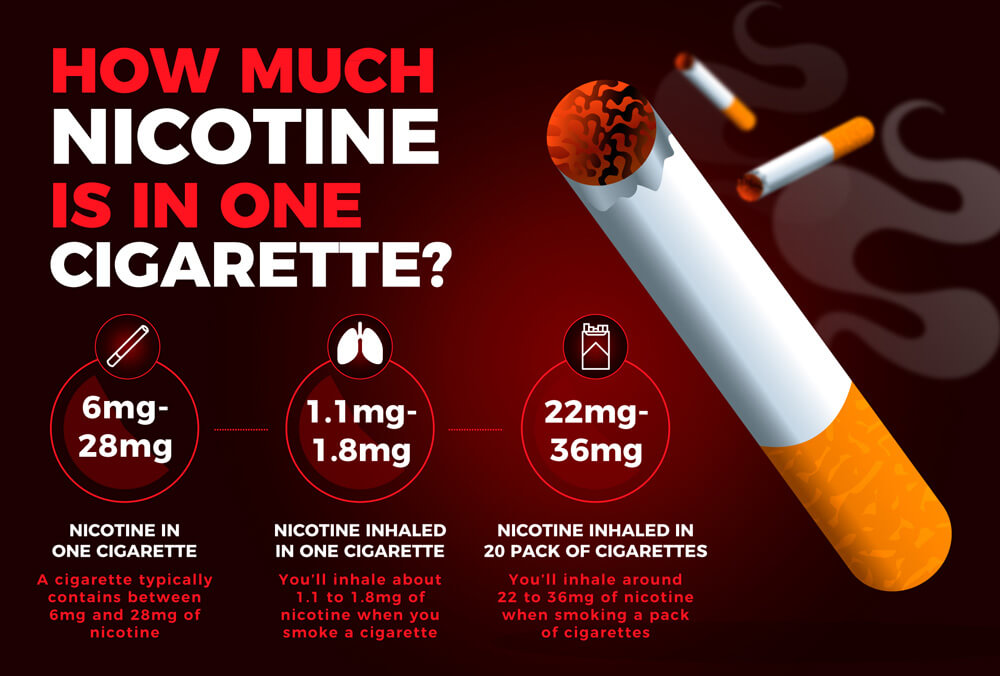
How Much Nicotine Is in One Cigarette?
Share
Although there are dozens of manufacturers of cigarettes, each of which produces a variety of products, virtually all cigarettes are manufactured in the same manner. Cigarettes have a similar effect on people regardless of the company that makes them because most companies use similar strategies. With nicotine, this is especially true.
The Facts
The average cigarette contains approximately 9 milligrams of nicotine. However, the smoker does not consume this amount of nicotine. Nicotine is absorbed through the smoke produced when cigarettes are burned and inhaled. Typically, less than 1 milligram of nicotine actually enters the body in this way.
Significance
One milligram of nicotine isn't sufficiently huge to make extremely durable harm a human body. However, cigarettes' nicotine content is not the primary cause of concern. Smokers face a serious threat from the way they take in the nicotine. Nicotine, alongside many different synthetic substances, connects itself to the tar inside the smoke and is consumed by the lungs when the smoke contacts tissue cells. The nicotine is quickly absorbed by the body, but the transportation tar is not. These tar substances cover the lung tissue and, when exposed on a regular basis, will thicken to the point where it kills the tissue.
Time Frame
Nicotine reaches the brain in less than ten seconds upon first inhalation from cigarette smoke and the central nervous system in less than five minutes. A person's initial effect on their brain is determined by a variety of factors, but nicotine typically acts as a mild depressant. The human body uses nicotine quickly because it is a chemical with a quick action. Within a few days of having their last cigarette, a person typically cannot detect any nicotine at all. How long it takes for the body to get rid of the last traces of nicotine depends on how long a person has smoked, their metabolism, and other physical characteristics.
Effects
Nicotine reaches the brain in less than ten seconds upon first inhalation from cigarette smoke and the central nervous system in less than five minutes. A person's initial effect on their brain is determined by a variety of factors, but nicotine typically acts as a mild depressant. The human body uses nicotine quickly because it is a chemical with a quick action. Within a few days of having their last cigarette, a person typically cannot detect any nicotine at all. How long it takes for the body to get rid of the last traces of nicotine depends on how long a person has smoked, their metabolism, and other physical characteristics.
Misconceptions
Numerous medical organizations and industry publications have documented the harm caused by cigarettes and have made it simple to verify their findings. In spite of enormous efforts made by public school districts, the U.S. surgeon general, and other organizations, many new smokers are completely unaware of how dangerous cigarettes are over time.
Warning
In addition to the well-publicized dangers posed by smoking, nicotine also poses additional health risks that are frequently overlooked. A person's risk of developing cancer is significantly increased by this medication, regardless of how they take it. In contrast to cigarettes, where the principal focal point of malignant growth improvement is as a rule in the mouth, lips, throat, and lungs, nicotine ingested in alternate ways expands the chance of disease in a more broad sense. This should be known, and people should think about the additional risks of smoking cessation products like patches and gum.
